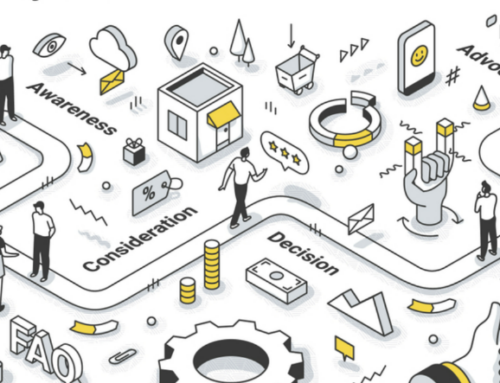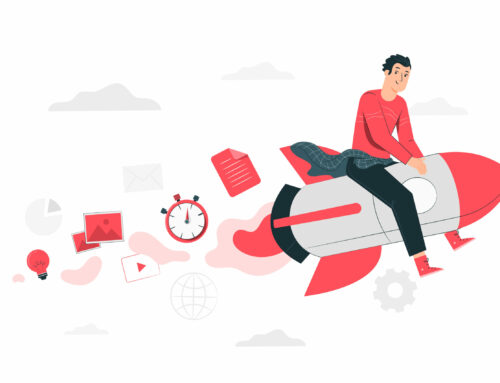About the author
What is CAC (customer acquisition cost) metric?
Customer Acquisition Cost e.g., “CAC” represents a business metric that says how much we invest as a business in acquiring a net new client.
In other words, this metric represents the total costs associated with customer acquisition – such as sales and marketing cost -, divided across all net new customers in a specific period.
CAC is a fundamental business metric for any business, and banks as well, that it is important to measure not only in the aggregate but also for each market segment and territory you sell your products and services so you could get the true value of knowing CAC: which segments are the most efficient and profitable as well as which channels are the best for your acquisition strategy.
How is CAC calculated?
As we stated above, the CAC metric is calculated by simply dividing the total cost of acquiring customers (cost of sales and marketing) over a given time period by the total number of net new customers acquired over that period of time.
If we would like to transform that into the formula, it would look like this:
CAC = (total cost of sales and marketing) / (# of customers acquired)
For example, if the bank spends $45,000 to acquire 1000 net new customers in 2021, then the CAC would be $45.
CAC = ($45,000 spent) / (1000 customers) = $45 per customer
So, our investment as a bank in acquiring a net new customer is $45 which means that the profit we make with the new customer must cover the initial CAC as well as other operational costs.
Why is understanding CAC so important for the banks?
Customer acquisition cost is a direct reflection of the future success of your banking business as well as many other businesses.
The reason why this is the case is that most of the banks put a lot of time and money into developing new products and services before they ever see a return on that investment per customer.
CAC metric is here to show you the path to profitability and it will begin to matter more and more as time passes and banks begin to add up the months it takes to recover from CAC and actually makes a profit per client as described on a graph below where the graph represents the whole CAC flow from the early period of the customer acquisition activities (highlighted in red) where you as a bank spend time and money on the customer acquisition (read: invest into your net new customers through marketing and sales) until the profitability era where you actually get the profit from your new customer as he starts paying for your fees and services until they close the accounts with you (hopefully never 😊)
What is the good cost of customer acquisition for the bank?
Knowing if you have a good customer acquisition cost can be hard as not all sales and marketing costs are easy to track and measure, especially in nowadays environment where marketing and sales channels are very much mixed between the online and offline world.
Generally speaking, a good way to benchmark your CAC is by comparing it to Customer Lifetime Value (also known as LTV) where it is said that an ideal LTV to CAC ratio is 3:1 (more about banks customer LTV in next blog posts).
Another option to know where you stand is by comparing with industry standards declared from sources like: Entrepreneur where finance industry average CAC is $175 while banking/insurance average CAC is $303.
How to reduce banking CAC?
Typically, all businesses want to reduce CAC and banks are no different.
Generally, CAC can be reduced in several ways:
- Optimize your sales and marketing funnels. As the customer acquisition process over digital channels faced exponential growth in the last 18 months for the banks, one of the first steps how you could optimize bank CAC is by understanding how many visits lead to leads, how many leads lead to opportunities, and how many opportunities lead to customers. These metrics could give you an overview of where you could make fine-tuning of your funnel.
- Optimize your conversion rates and increasing the number of customers acquired. As the next step of funnel optimization, banks should focus on the optimization of conversion rates at each stage of the funnel. Changing the copy, landing pages, or opt-in forms is the way how you could start looking for a way to increase % of conversions.
- Optimize your marketing channels. As you start measuring CAC, you will soon figure out which channels are the most profitable for your business so you could start focusing more time and energy on those channels. For example, if you see that the Google Organic channel is bringing the most value for the money (read: brings the most leads that convert into customers) start working on this channel optimization and explore more options on how you could benefit from it.
- Optimize customer engagement. In order to start making a profit sooner, you should be finding a way to cut down the time it takes to get new customers engaged with your products and services. The quicker product engagement happens per customer the cheaper acquisition cost becomes per customer.
How digital customer onboarding could reduce a bank’s CAC?
If we would need to choose a perfect time to constantly find ways to optimize customer experiences and think about how you can save their time and effort then it would be right now, in the digitalization era.
And one of the key points here lies within the digital customer onboarding process which is one of the solutions banks could utilize in order to identify friction points and see where the customers are dropping out from the process, making banks lose new customers.
And this is exactly one of the main challenges banks face today (customers dropping out from the final steps of engagement), drop-in final conversion where the actual sales happen.
According to many surveys and our experience on several different markets and within tens of banks is that the most consumers abandon a bank during the onboarding processes because at least one of the reasons stated below:
- Overcomplicated bureaucracy steps
- Lengthy onboarding process
- Time-consuming authentication
- Difficulty in filling out forms
And these points are actually true “sweet spots” for you as a bank to focus on and reduce abandonment and therefore, lower your bank’s CAC by making it easy for your customers to complete the process.
What banks could do digitally in order to reduce CAC?
One of the first steps banks could do is to go digital with all (or as many as possible) onboarding processes and let the customers fully apply online from the channel they prefer (yup, omnichannel onboarding process). Some of the processes you could digitalize would be:
- To open new accounts or start new services from anywhere they prefer, and any channel they like
- Use live chats to engage with customers and understand their needs
- Let your customers upload their photos and ID proof from their devices in the most convenient way for them
- pre-fill customer details as much as possible (especially if you are upselling to an existing customer)
- Implement recognition technology into your apps that will make it easier and faster to verify customer identity
What about BPM in the banking industry, could that reduce CAC as well?
If we made a focus in the previous paragraph on digital customer onboarding as one of the key processes where banks could reduce CAC, then having digitalized internal processes is as important as digital onboarding.
The reason why this is a case is that in order to properly serve customers and delight them by the speed of solving issues or responding to requests the bank’s internal processes should be aligned as one.
And making customers happy with your bank services is what makes them advocate your business and actively drive referrals to you (more about that later in the post).
That is why we see growing demand for banking BPM solutions that could digitalize internal processes to the point of automatization which supports digital customer onboarding.
P.S Solutions that include the BPM tool can be instrumental in meeting challenges such as escalating customer expectations and regulatory pressures head-on, while significantly improving the bank’s efficiency and effectiveness, reducing operational costs that are also included in the CAC metric and you could see more about Digital Banking solution here.
What are the bank customer acquisition preferred channels?
From the research that you can see here the customer acquisition channels used most commonly by marketers today are the following ones:
- websites (89%)
- email (81%)
- social media sites (72%)
- direct mail (66%),
- SEO / pay-per-click (PPC) advertising (65%).
As the stats suggest, the modern banking customer’s experience does not begin when they arrive at a bank branch but it starts online and then converts offline in most cases.
In an on-demand economy where social media and mobile innovations have expanded the range of crucial touchpoints, the most successful bank customer acquisition strategies are the ones that diversify and personalize methods of engagement across the entire customer journey.
Hint: here you can see the value of Asseco products backed up with AI solutions which helps you personalize marketing activities for the banks
Which customer acquisition tactics bank should apply in 2021?
There are many tactics that could be used for the bank in order to acquire new customers and today we shall state a couple of them:
Understand the multichannel banking customer experience
In order for a banking customer acquisition strategy to work, the first step banks should do is to identify which channels are most relevant to the target customer group.
At the end of the day, you as a bank don’t want to waste your time and money on the wrong channel or customer acquisition tactic that does not bring a good ROI.
And the important message here is that there isn’t a single correct answer here.
Like in other sectors such as retail or telco, consumers may switch from one channel to another on their way to making a purchase decision and here digital channels are important, but branches still play a big role in the whole process.
That is why the banking sector is “born” for a true multichannel digital customer strategy.
The goal of digital strategy is that your bank should be able to kick off the sales process in one and then switch to another channel to close the deal-making a potential customer feel your consistency in communication.
Moreover, when an inquiry comes through in one channel such as a website, your team must be prepared to manage the lead in other channels to provide a more seamless experience (like a continuing conversation in the branch).
By setting channel priorities and investing in infrastructure to deploy multichannel efforts, banks can navigate quickly shifting marketing channels and effectively drive customer acquisition.
Demonstrate thought leadership through content
Thought leadership content is a great way to capture your potential customer’s attention and build trust.
The financial services industry is constantly evolving, which means there will always be relevant topics your bank can talk about in order to demonstrate thought leadership.
And here we don’t talk about only creating promotional sales banners or landing pages.
It’s of high importance for CAC optimization to create educational and meaningful content that positions your brand as an industry leader. For example, you could write about new areas of investment opportunities, emerging digital tools, and general financial trends and pack your content with search-engine-friendly keywords and calls to action so you could work on conversion optimization at the same time.
Actively drive referrals
In many businesses and especially in banking, recommendations from family and friends are powerful customer acquisition drivers as the trust transfer makes it easier for family members or friends to engage with the bank.
And the one thing we should not forget is that by making your customers happy, they will want to share their experience with people who matter to them the most and those people are the ones that are most likely going to be your future customers.
It, therefore, makes sense to develop a customer referral program (through newsletters or a loyalty system) that incentivizes your best and happiest customers to refer their friends and family to your bank. Not only does this make for a low-cost, high-ROI banking customer acquisition strategy; the acquisition costs for these referred customers will also be lower than normal acquisition.
Invest in tools that could make your bank customer-centric
Creating a “wow” effect and delighting your customers could be the key for banks that prioritize customer acquisition.
Providing an effective, easy and effortless banking experience through mobile apps or e-banking solutions puts you as a bank in a position to attract more customers without inflating customer acquisition costs.
But this is not an easy task to do as you need your entire organization to focus on becoming more customer-centric and understanding the value of tools that can make personalized communication with the customer’s overall channels.
This may require you to re-engineer your sales, services or marketing strategies based on solicited and unsolicited customer feedback and implementing some high-end AI and mobile banking solutions.
Conclusion
Banks (and other financial institutions) that keep actively listening and understanding evolving consumer demands and expectations are the ones most poised to acquire new customers in 2021.
In the face of changing preferences, you need to build a bank customer acquisition strategy that nurtures your brand’s digital presence and puts the customer at the forefront.
By following the tactics above, and fully understanding your customer’s preferences, you can position your company to drive customer acquisition and leverage the ROI.






